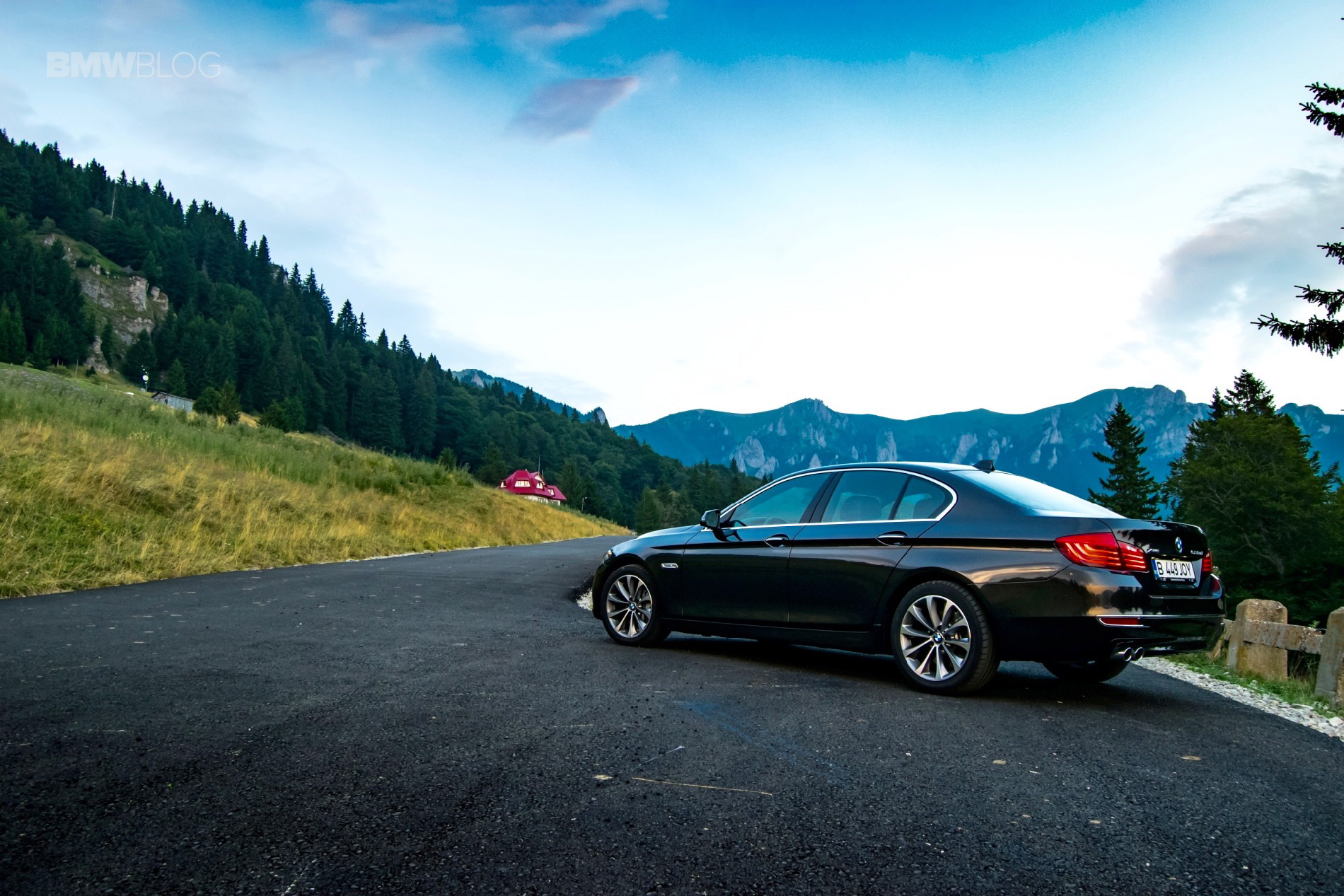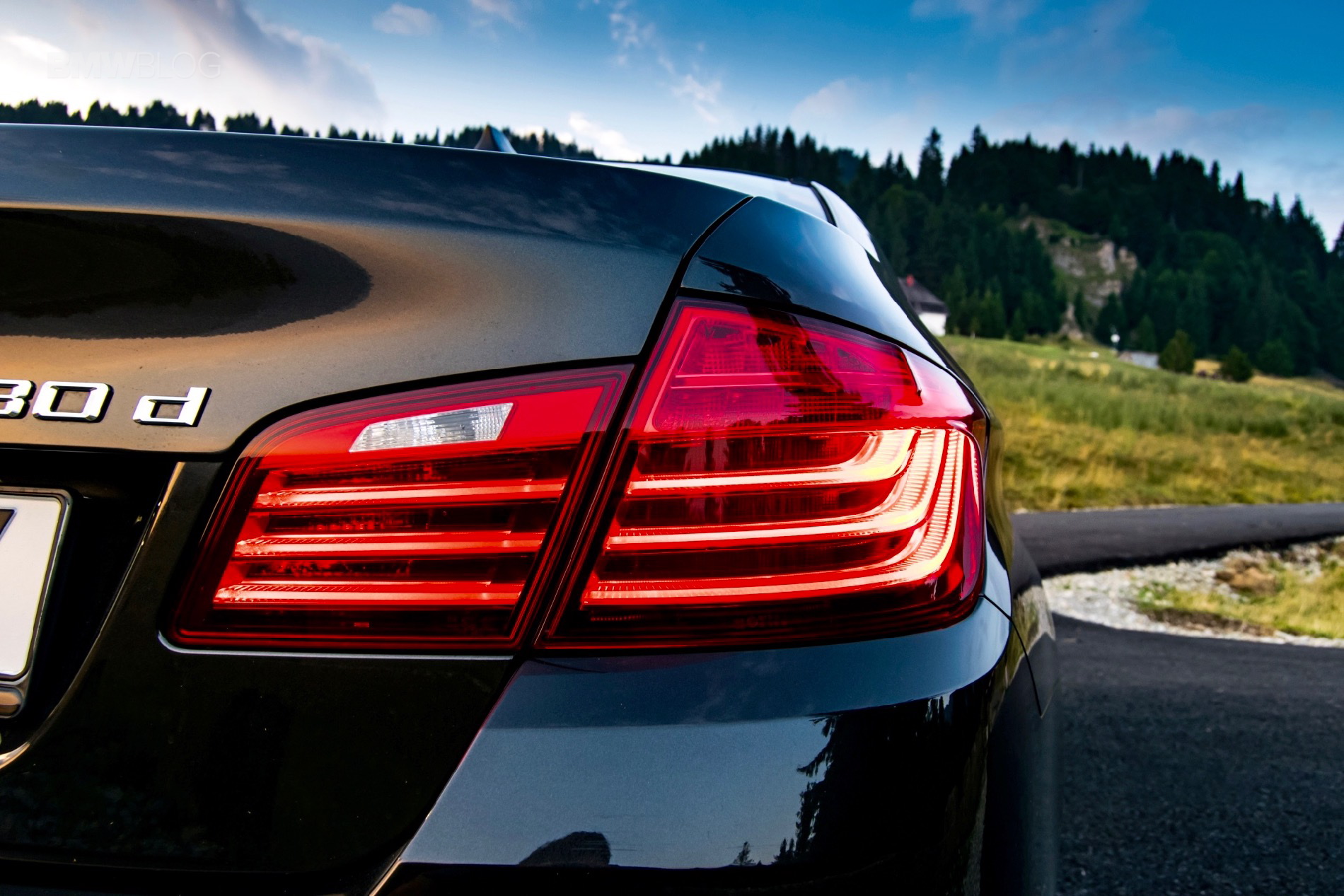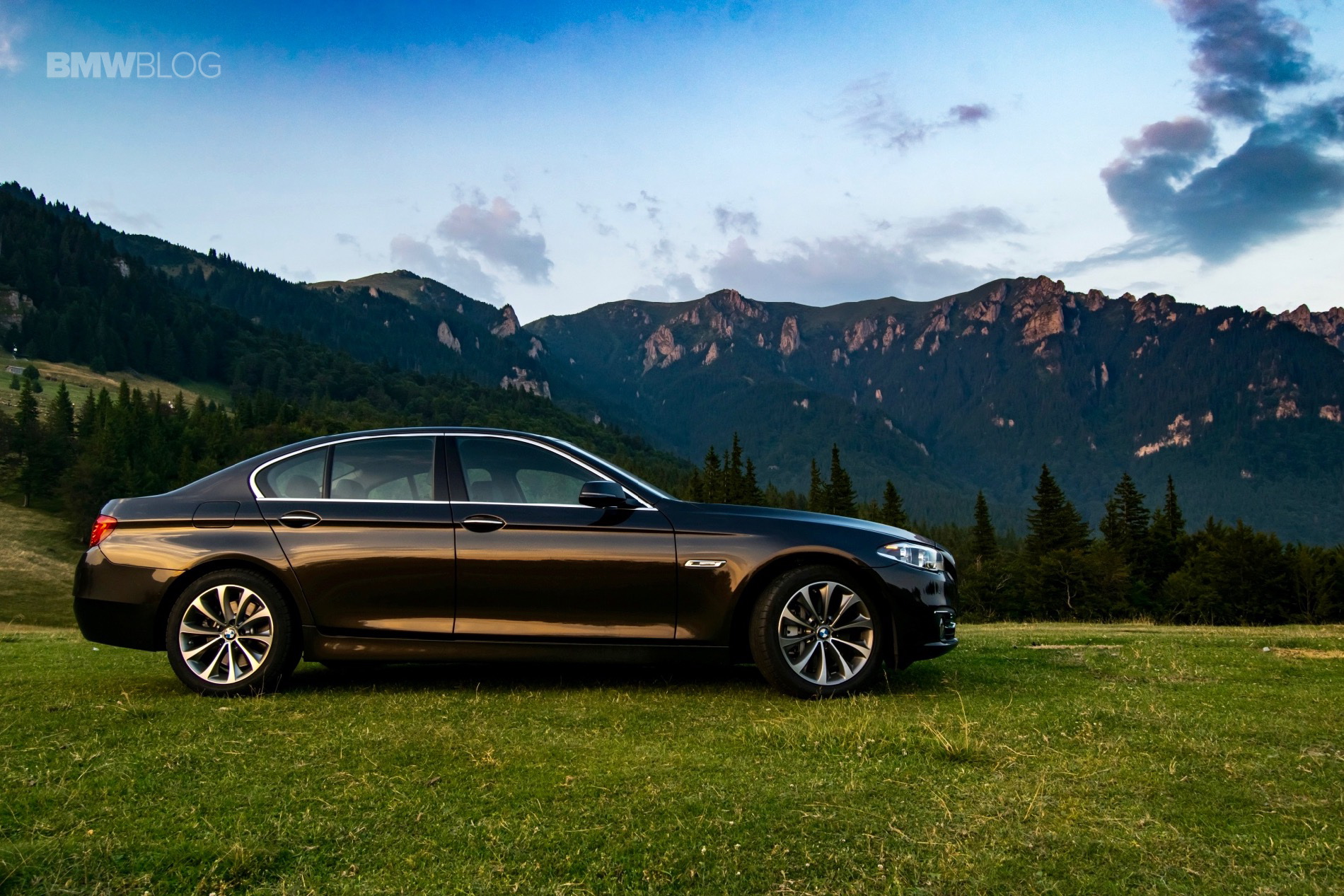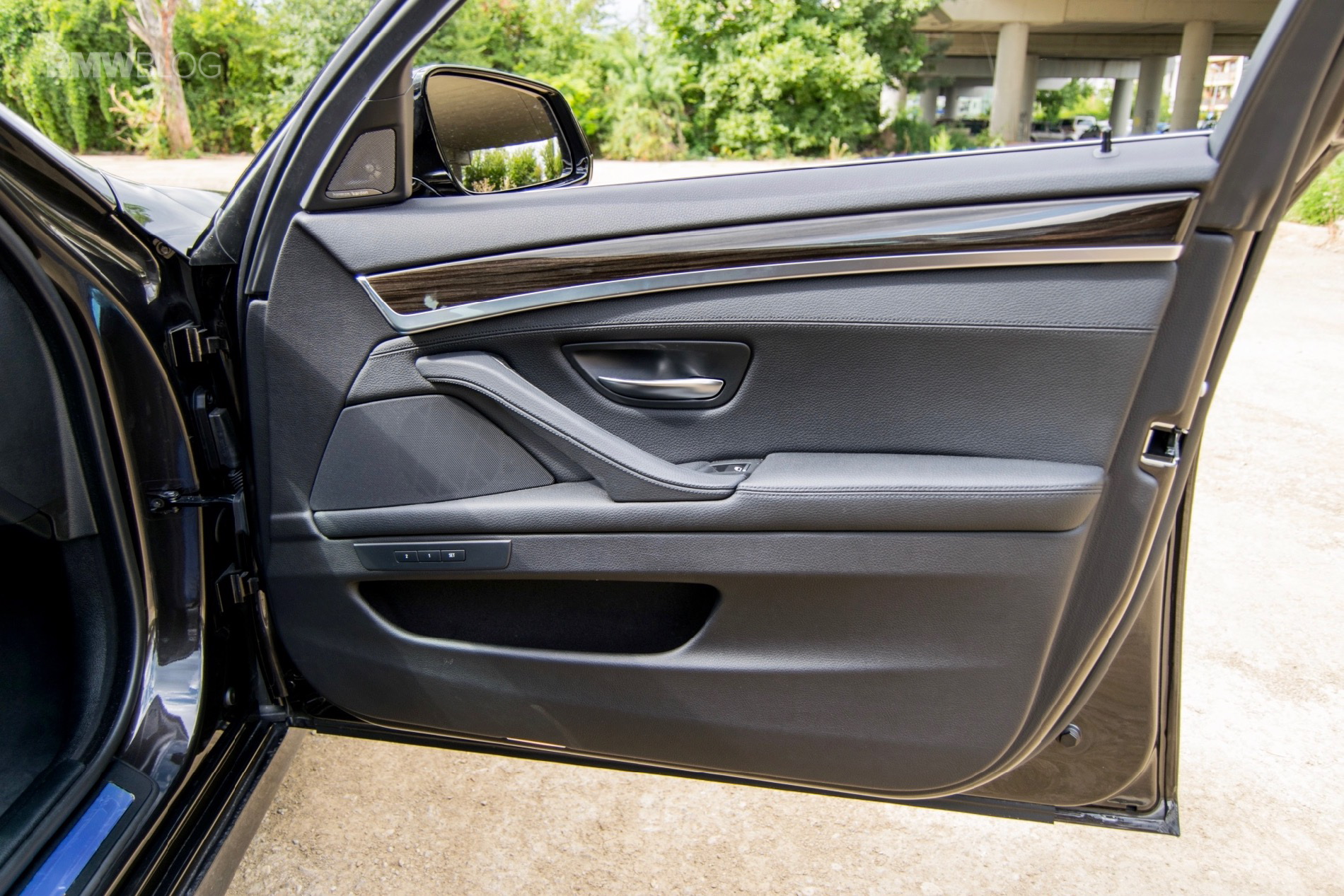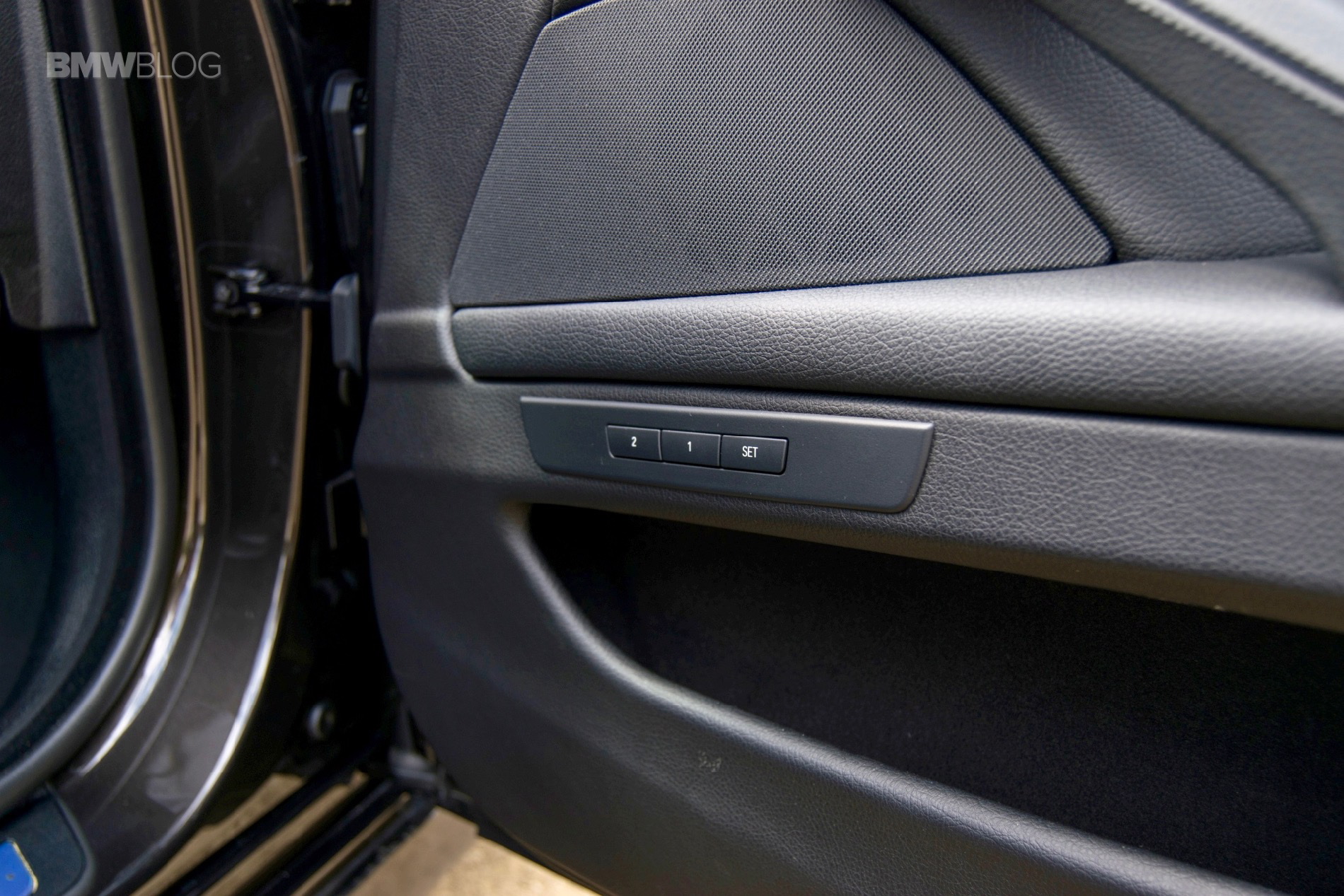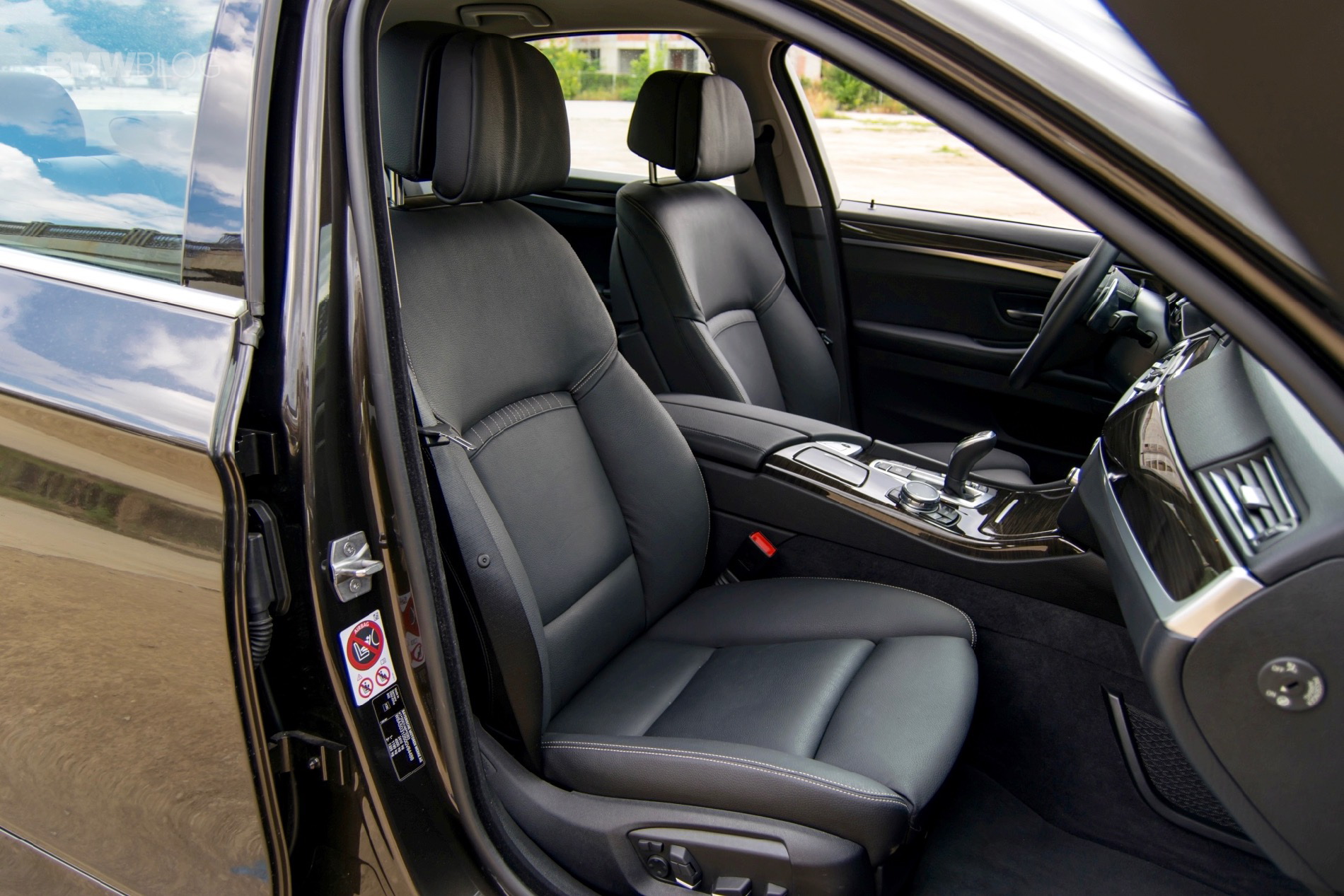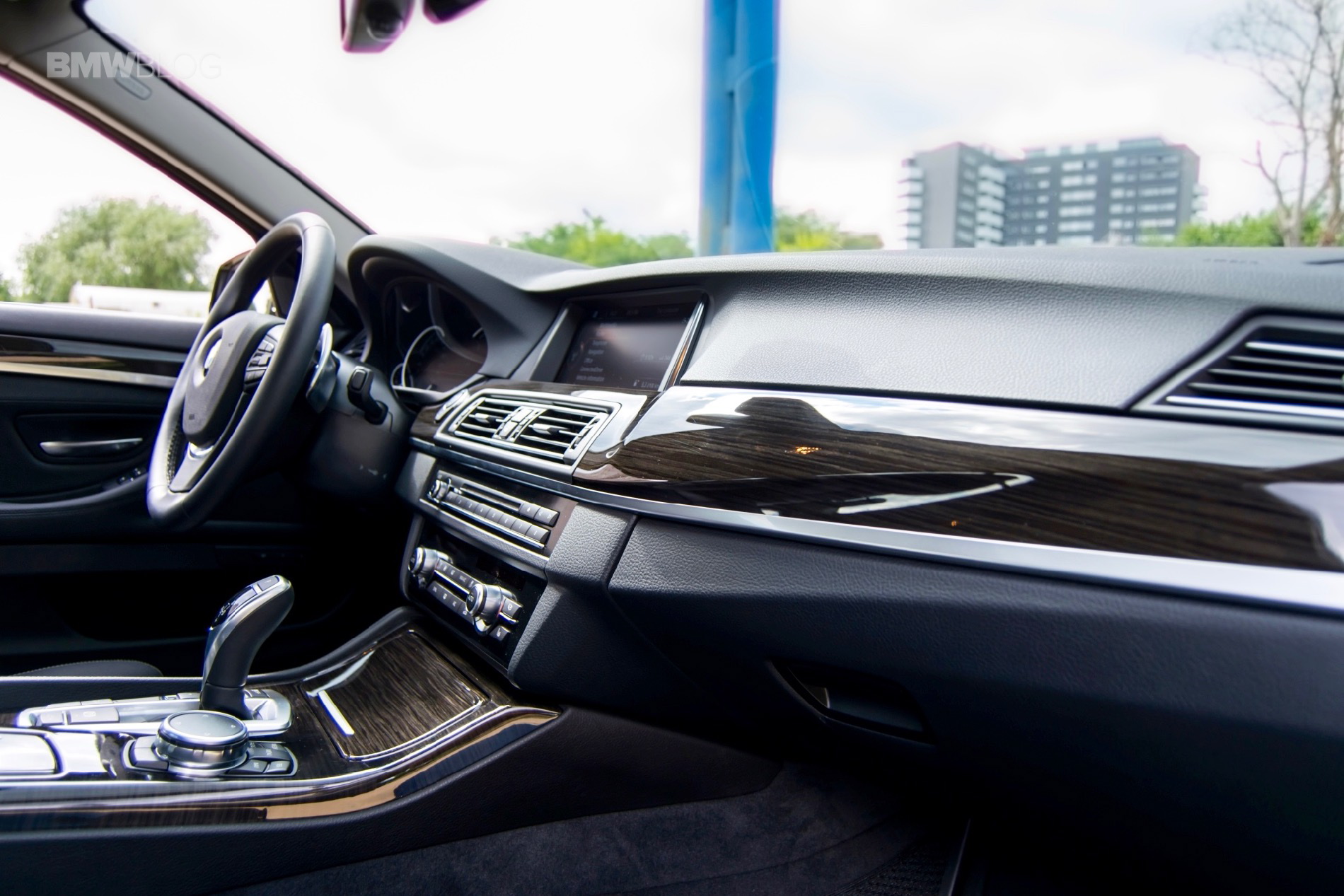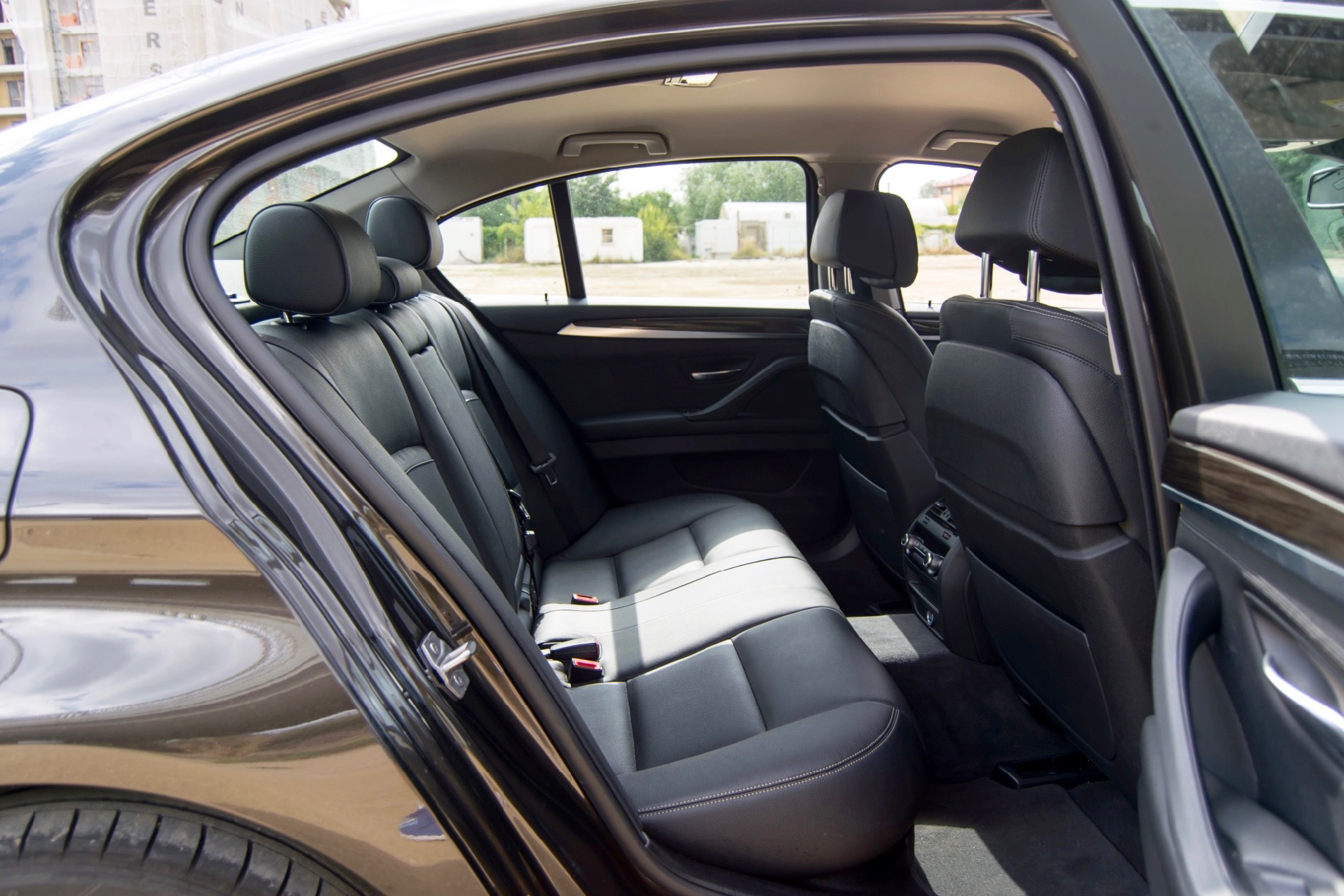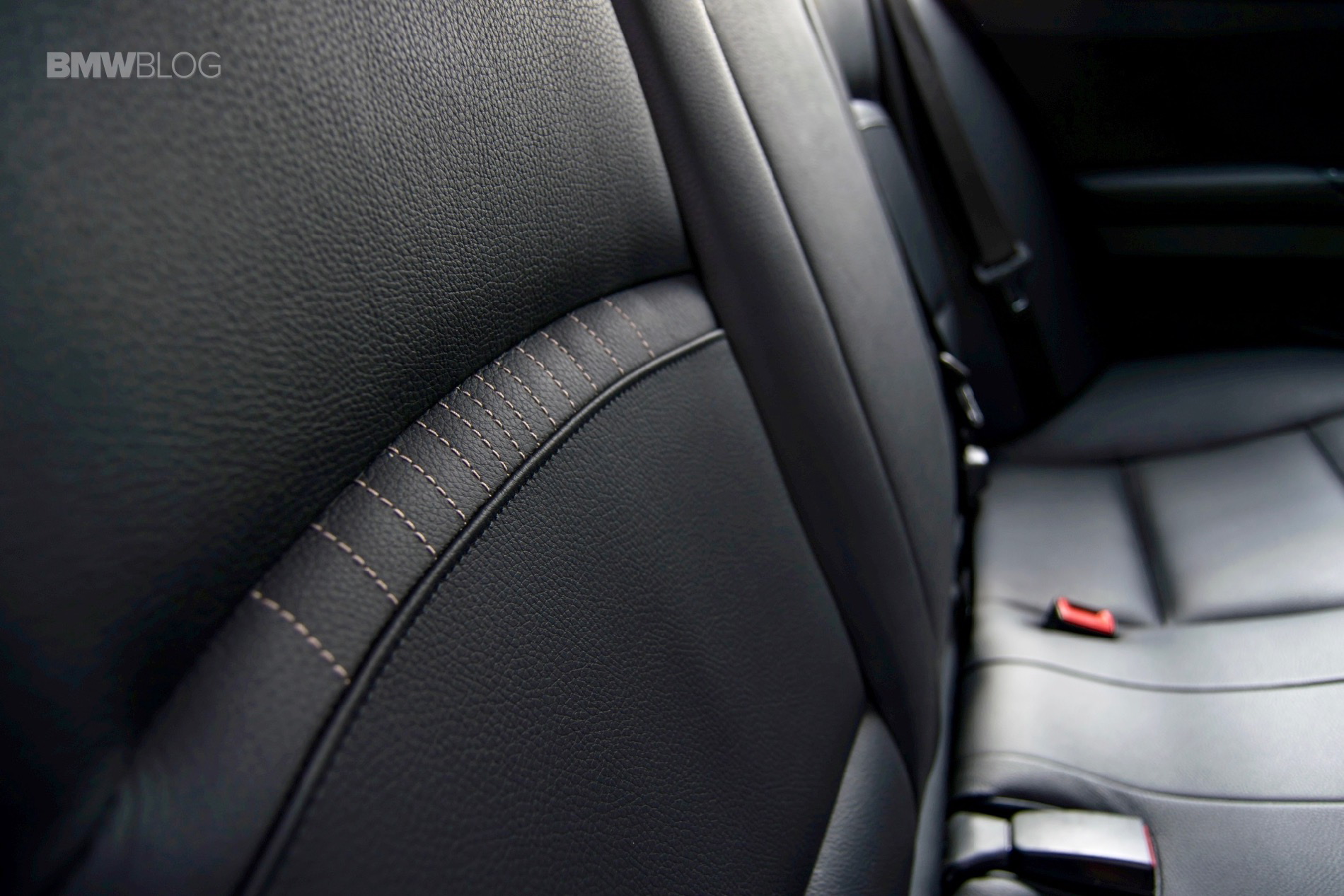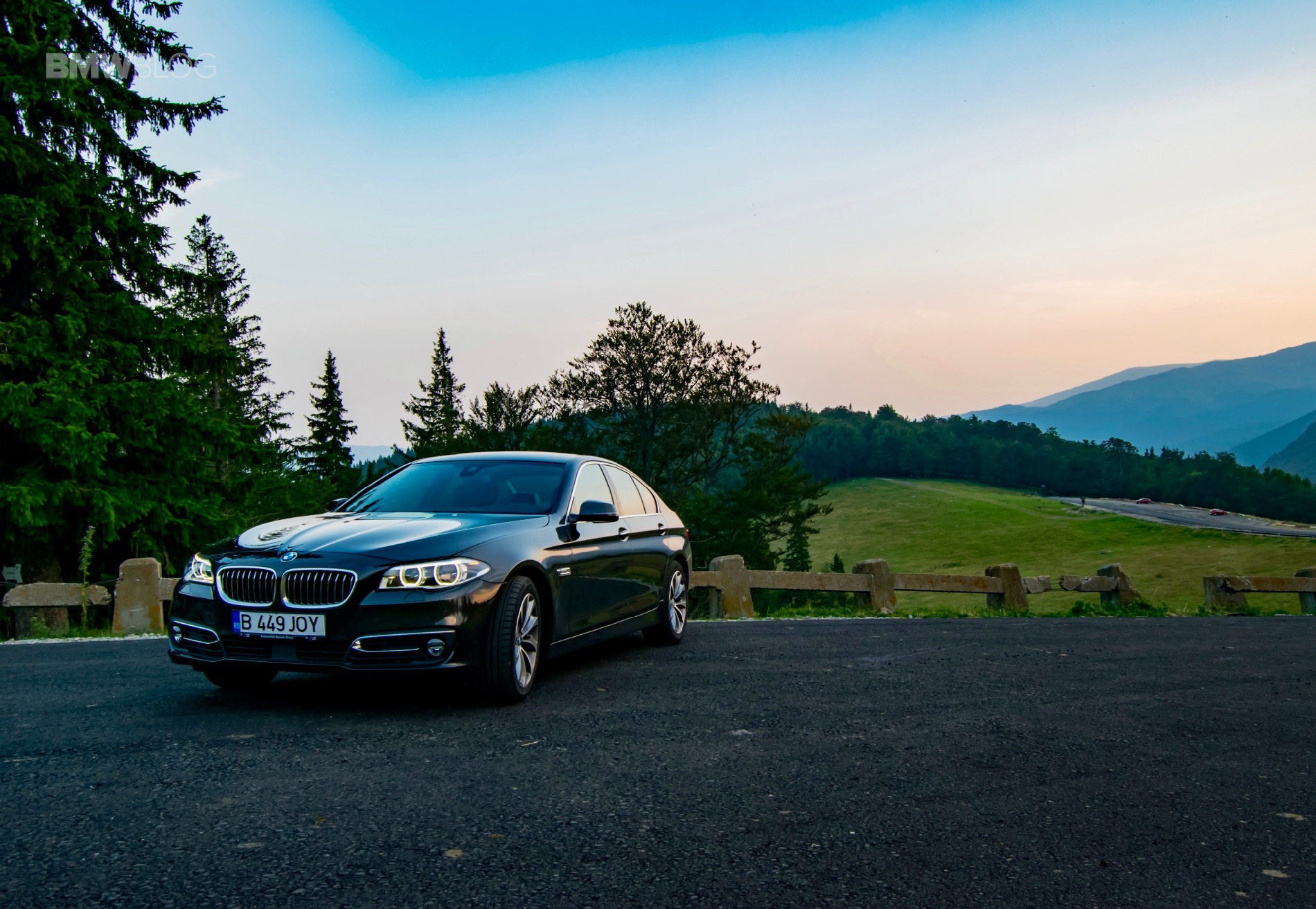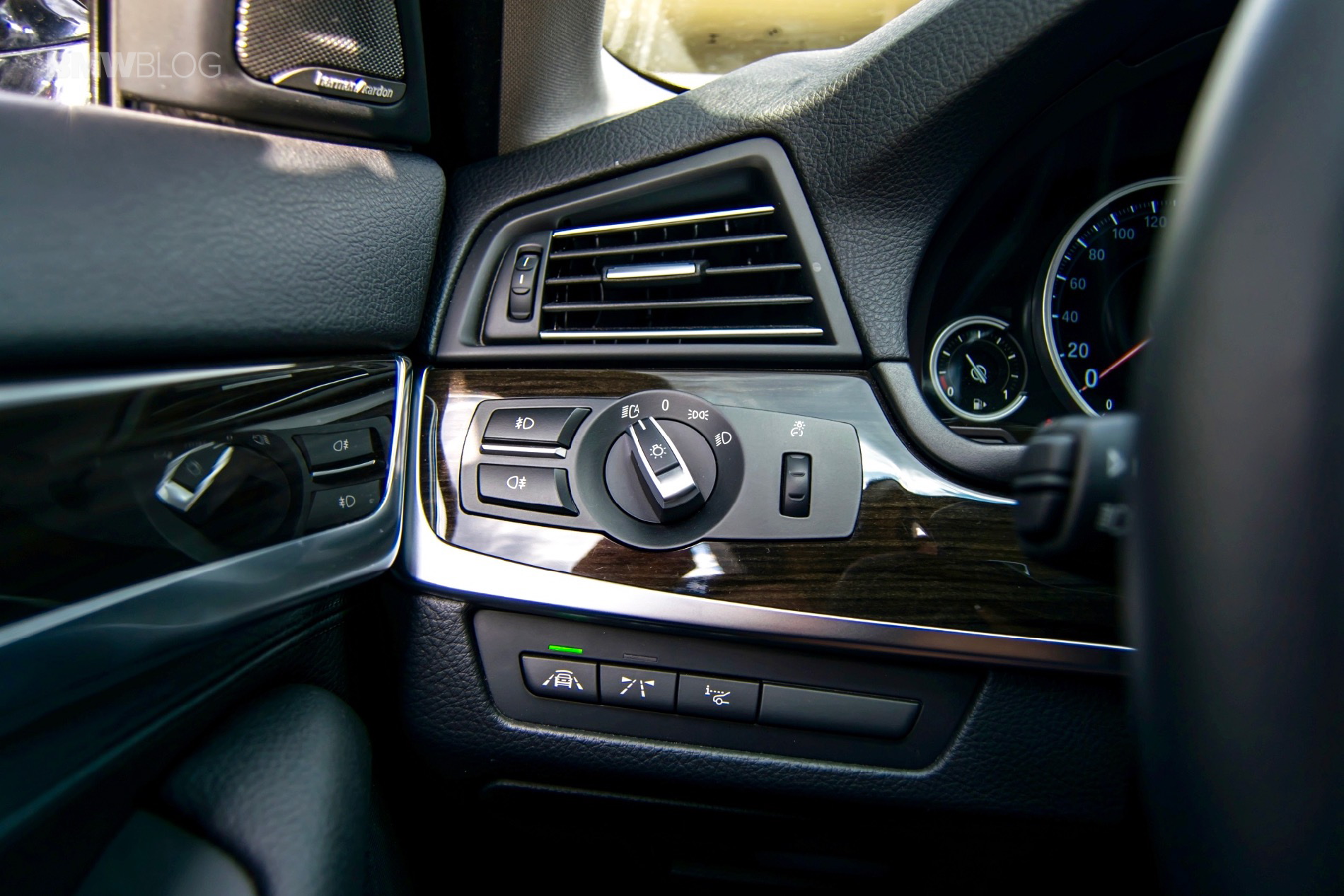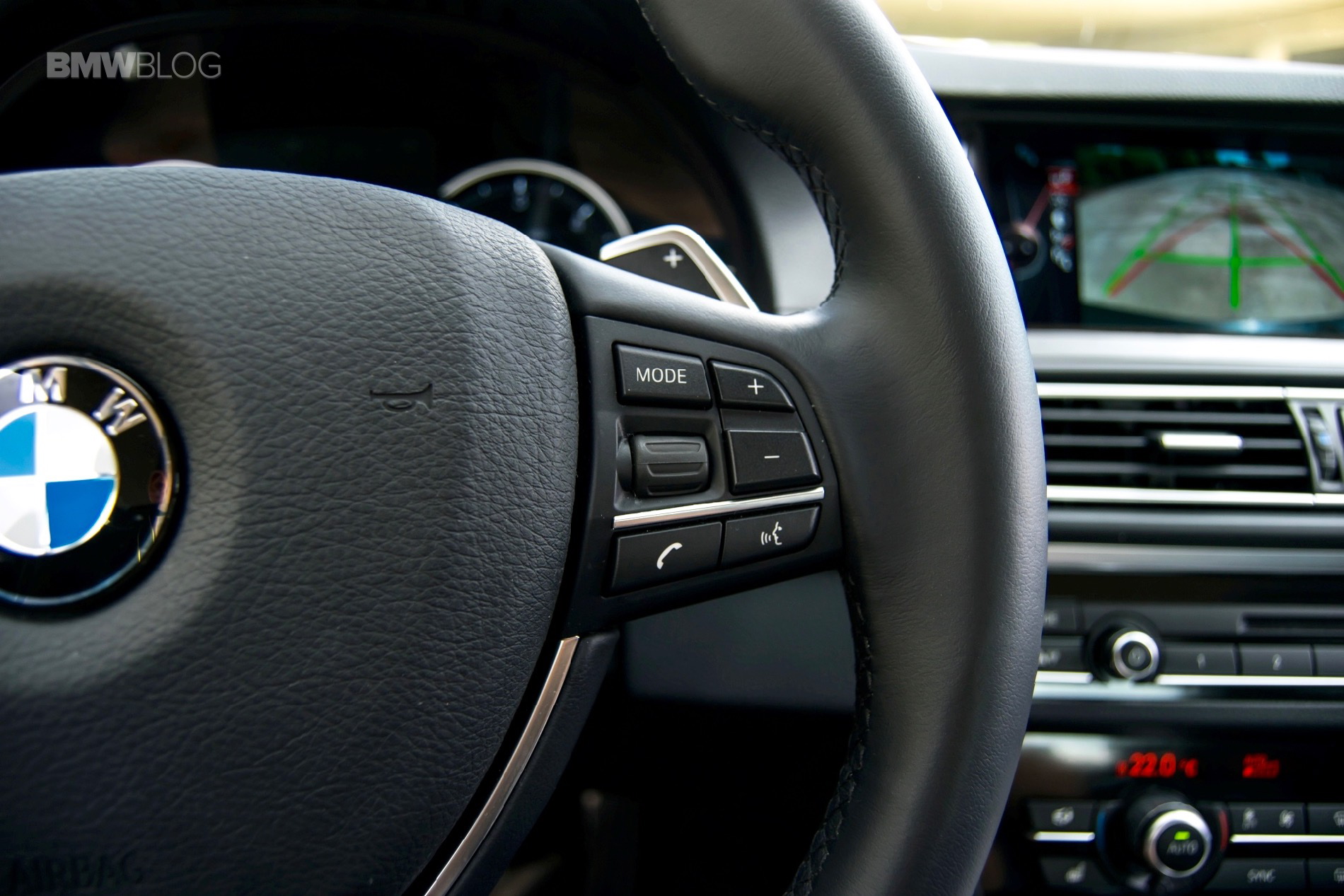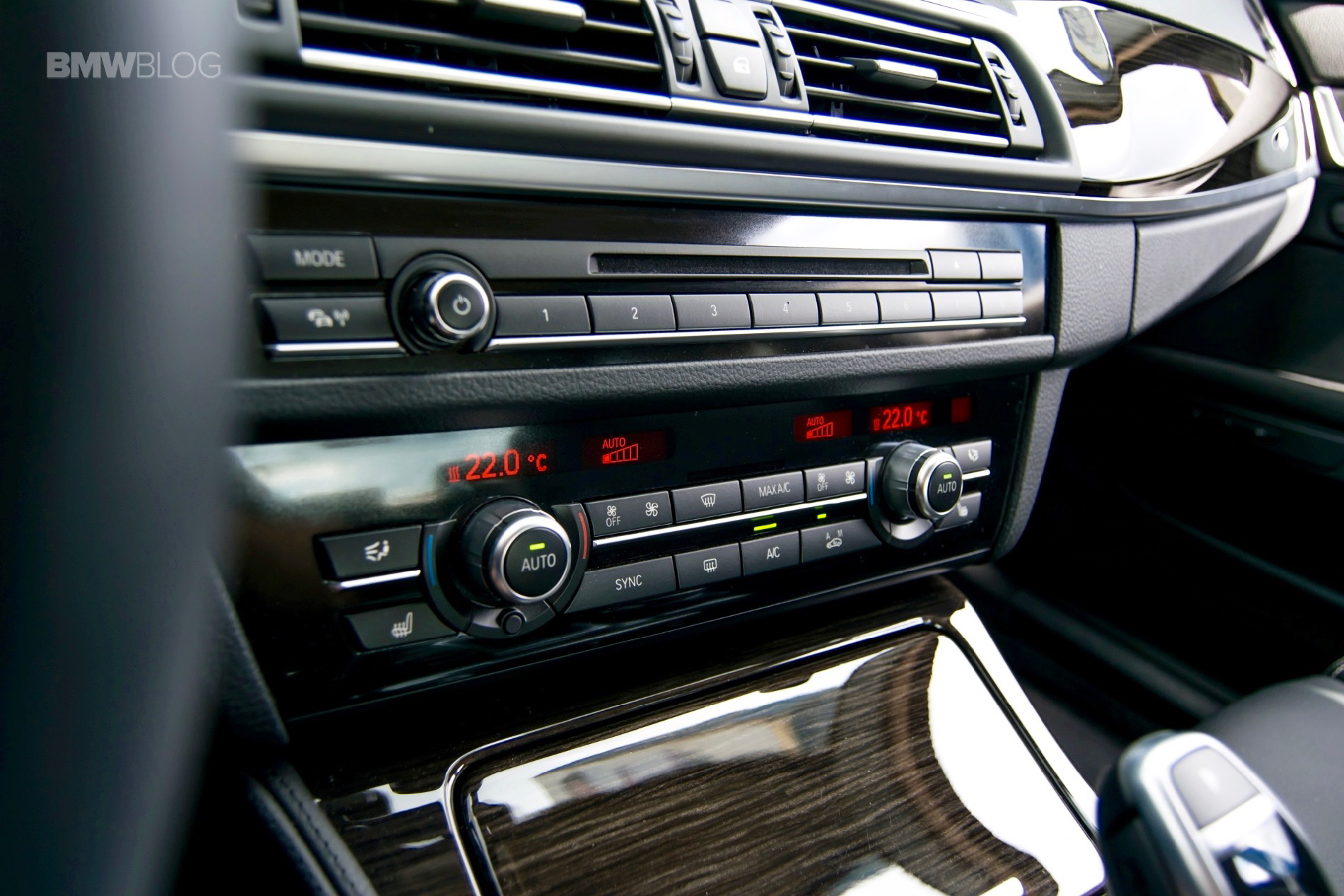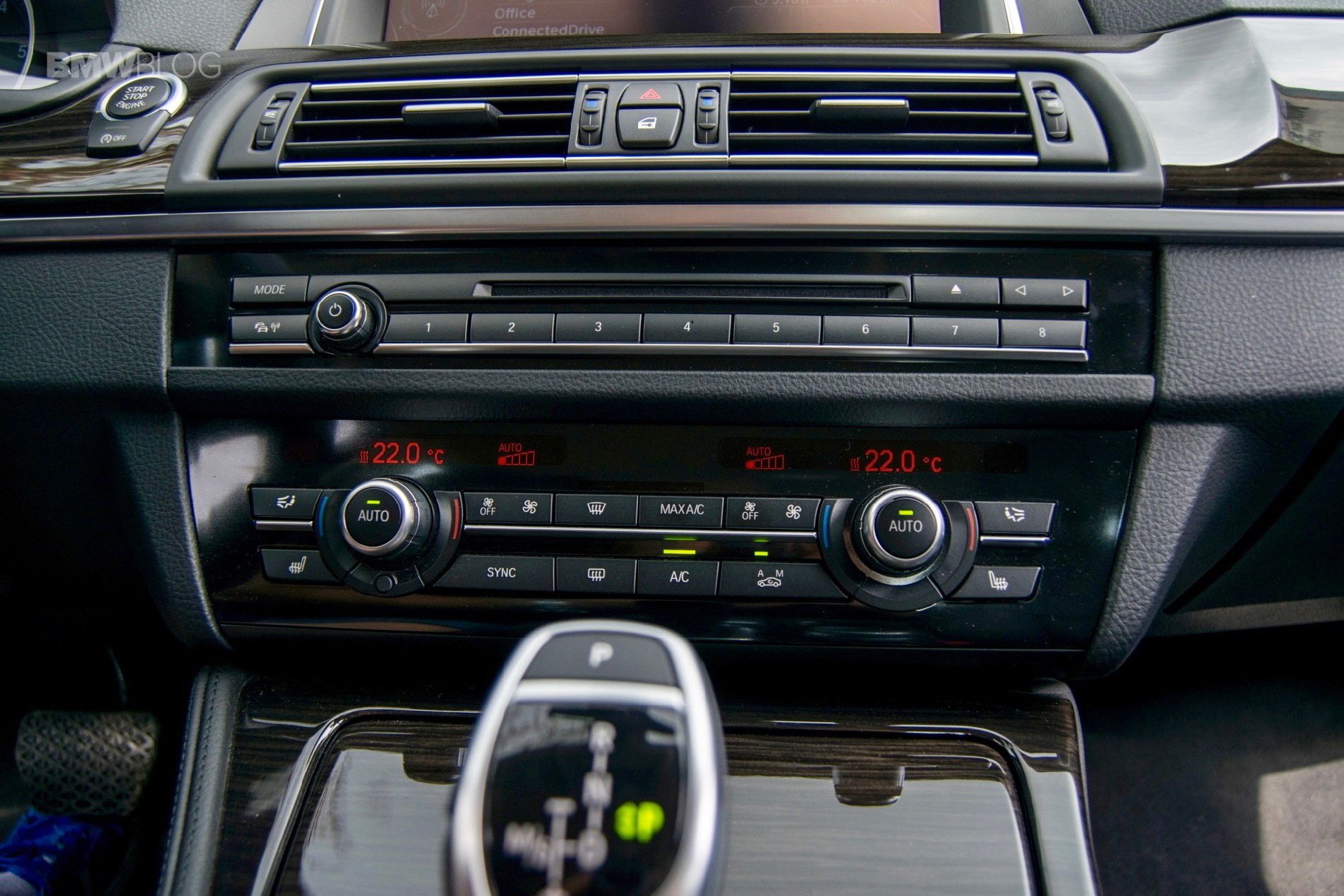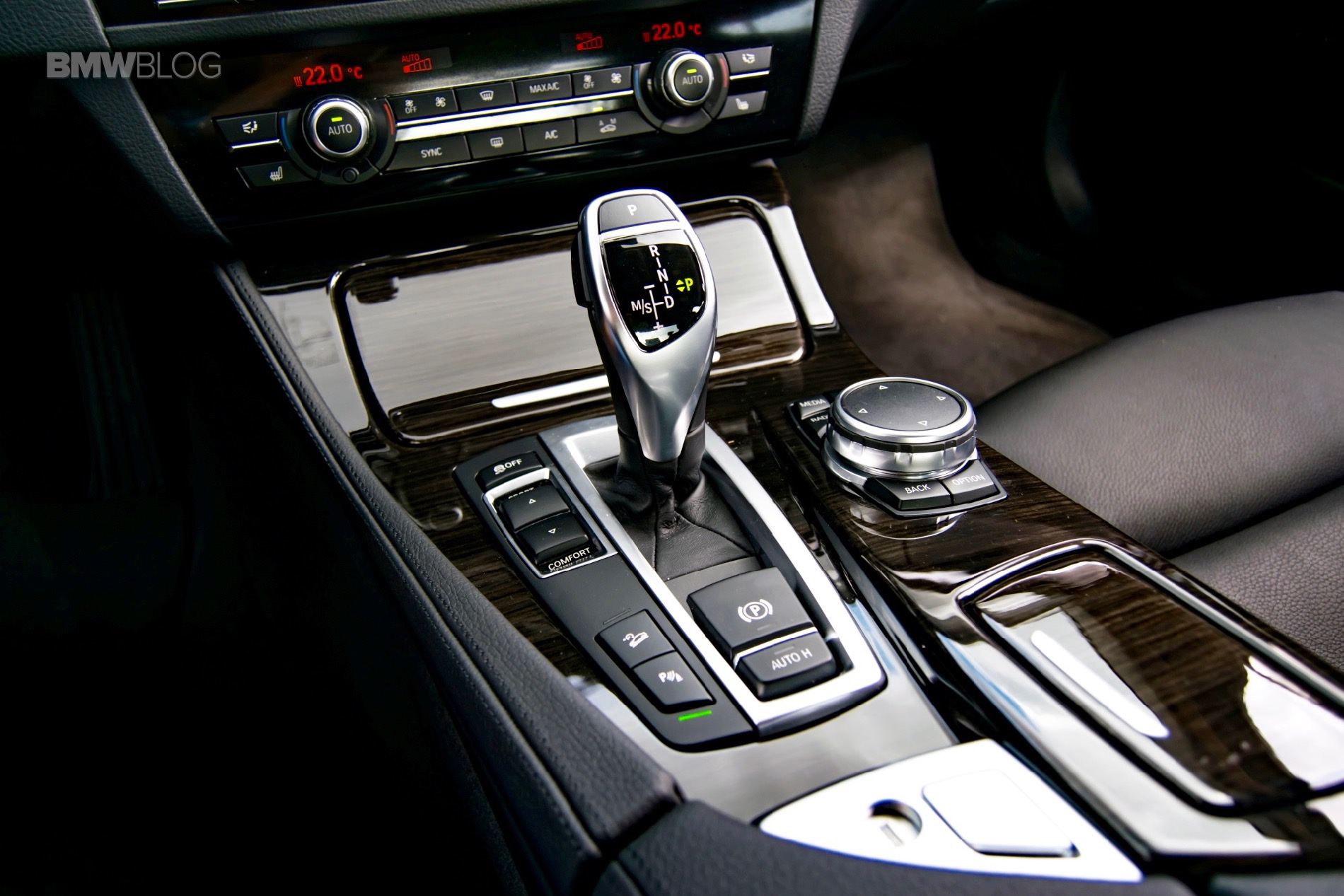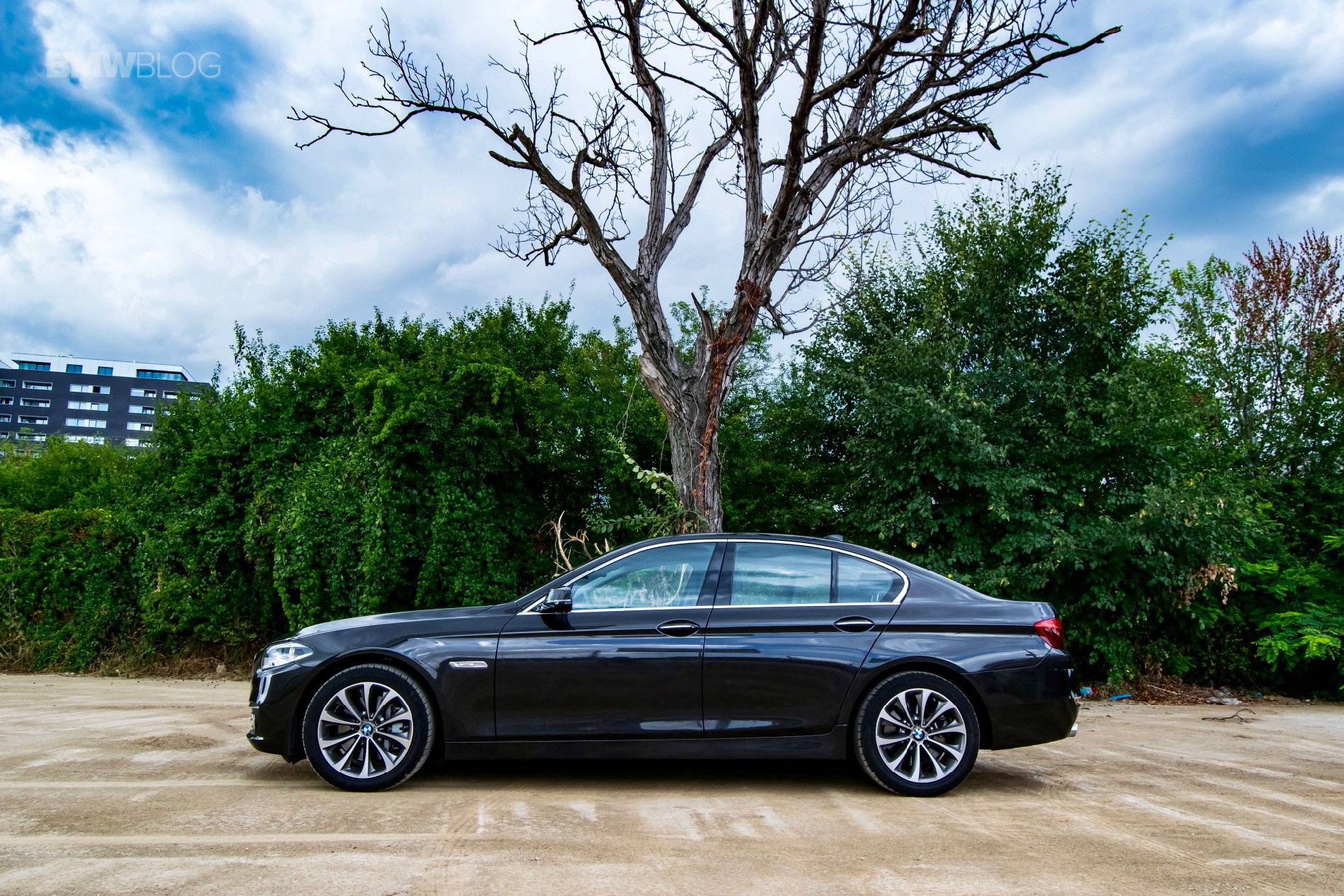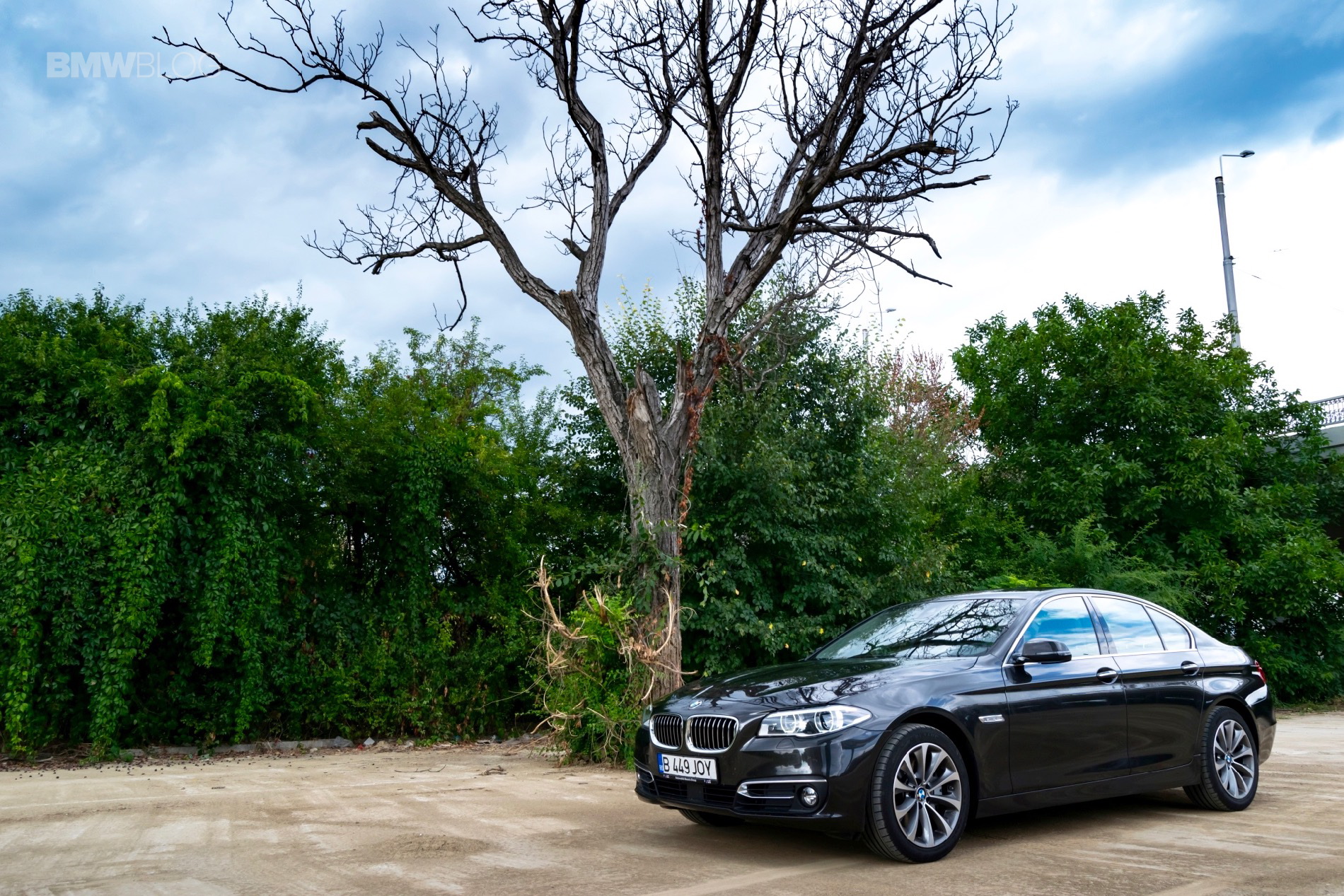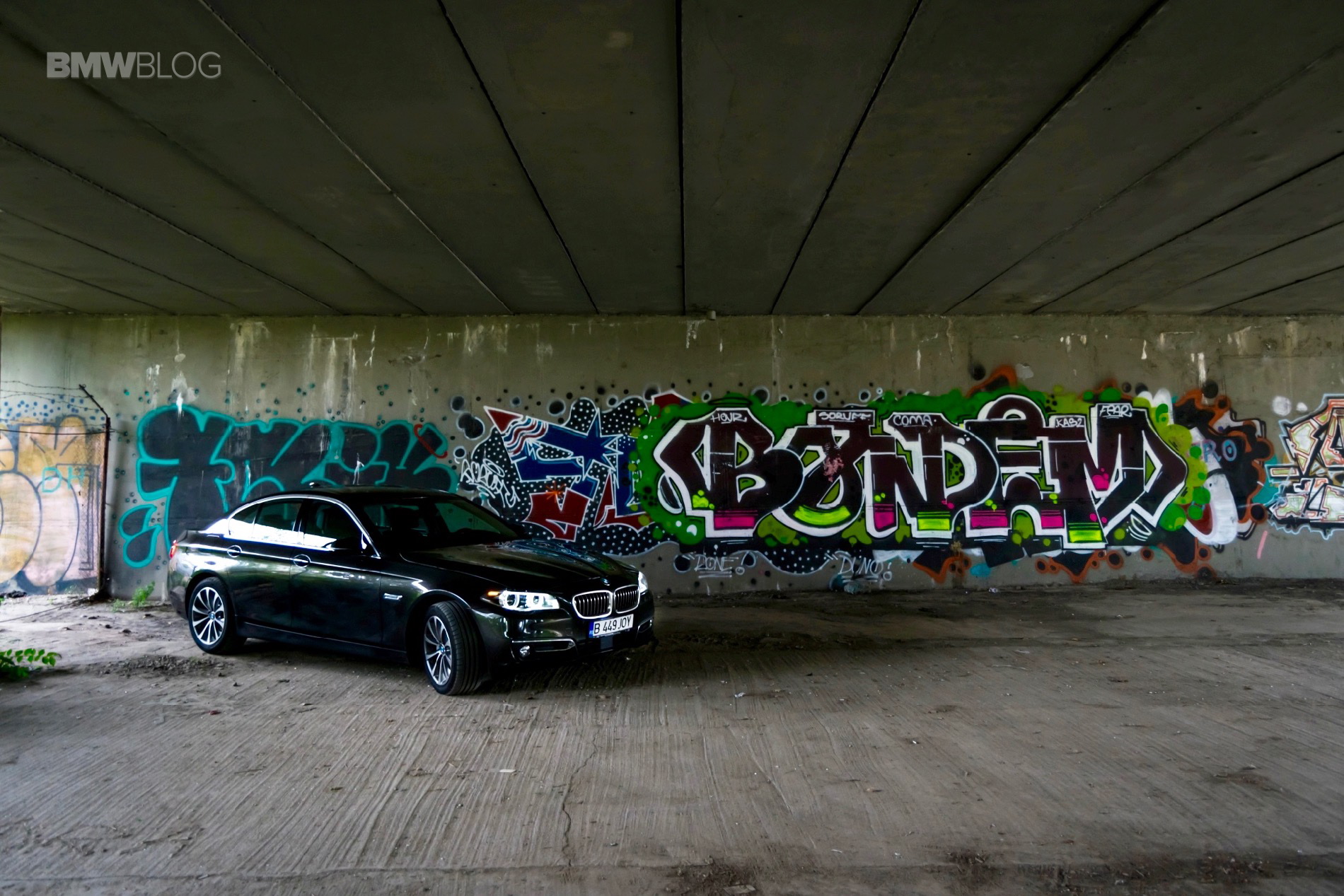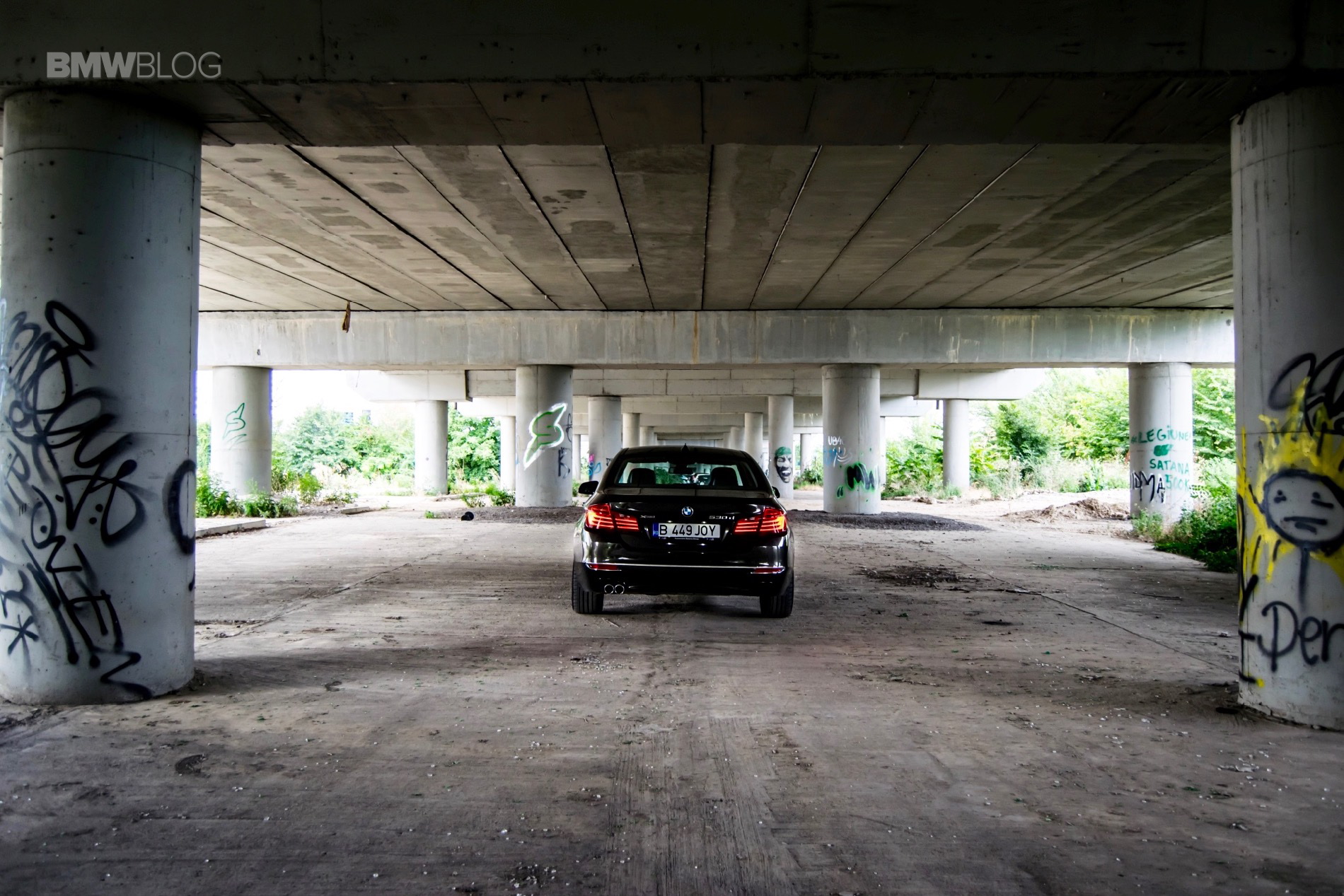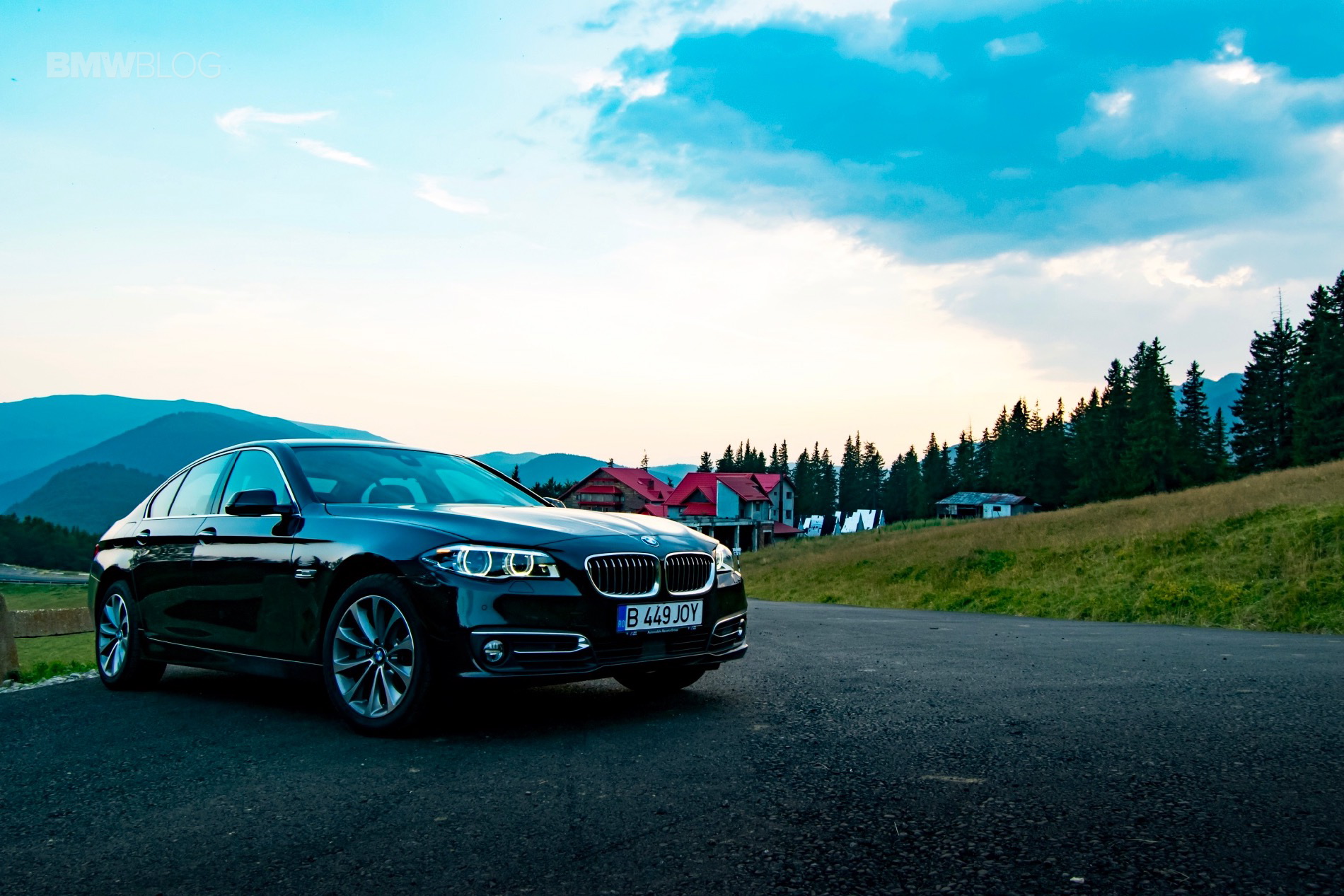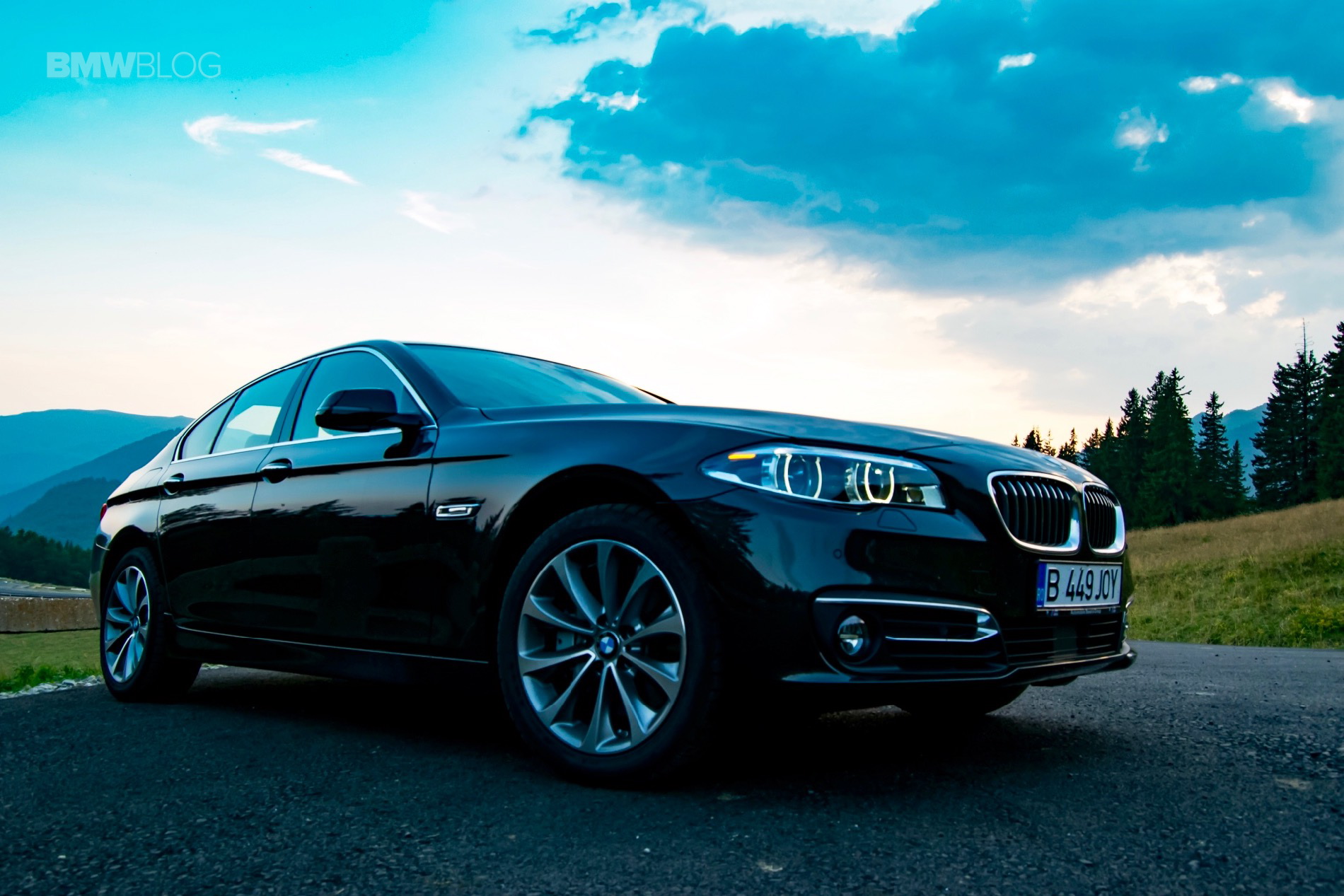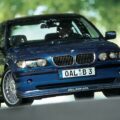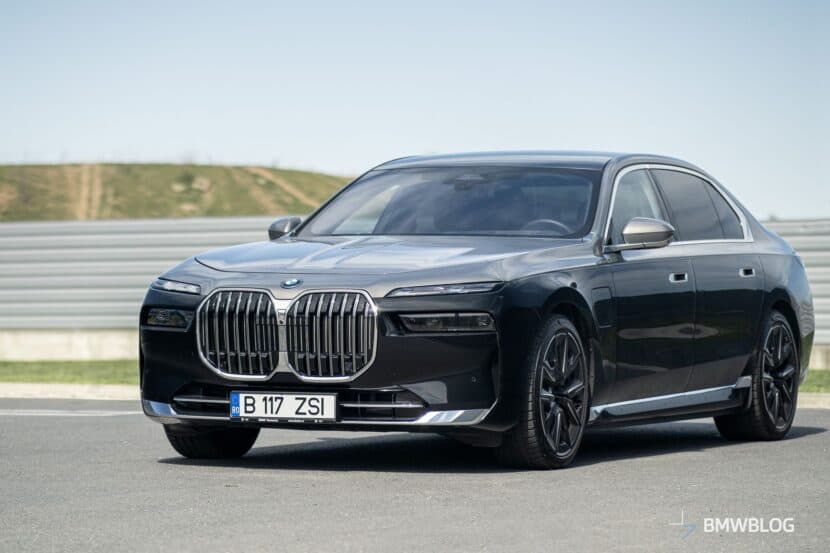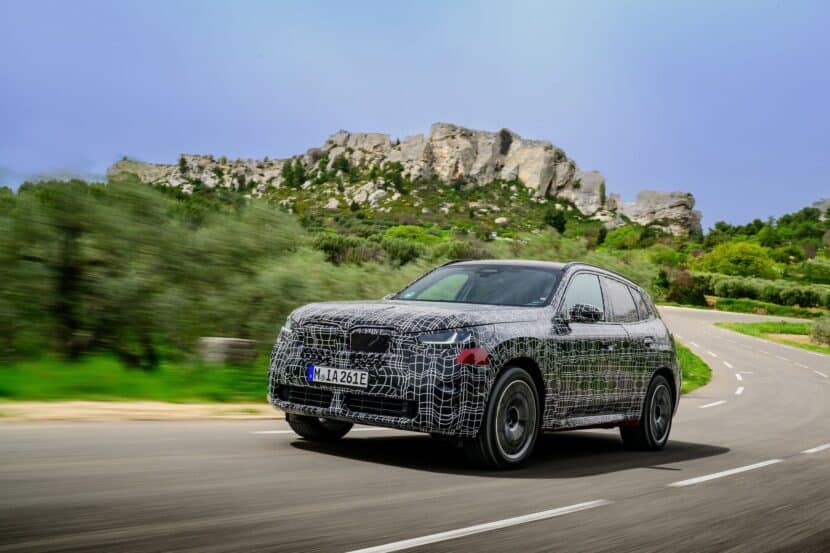Last year was a big year for BMW. Having launched the new flagship for the entire BMW Group, it’s hard to see last year as anything but a new turning point in the 100 years of existence for the Bavarians. However, 2016 turned out to be even better, as the same anniversary brought forward the plans the Germans have for the industry as a whole as well as a couple of new models. The most anticipated one will be revealed towards the end of the year and it’s going to be the new G30 BMW 5 Series.
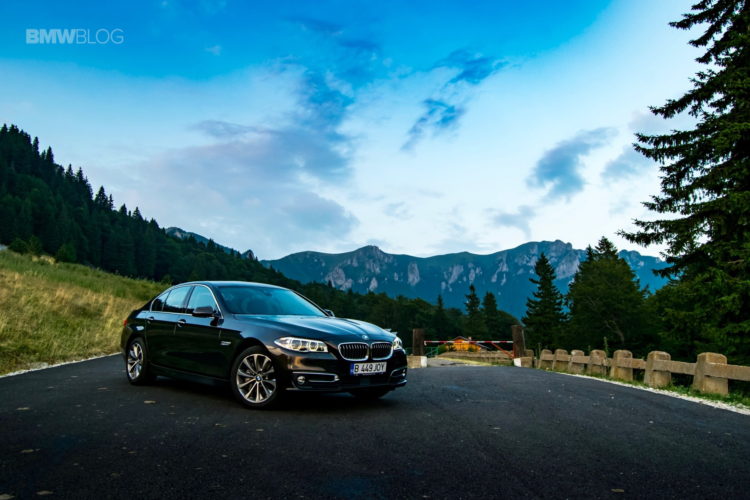

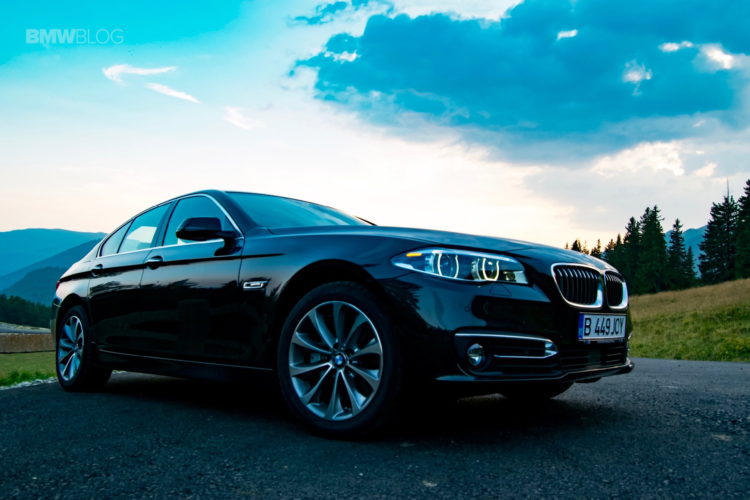
A lot has been said about the new 5er, from how it’s going to look like to what new technologies it’s going to bring to the industry and the BMW company at the same time. But all that can be confirmed so far is that we’re extremely close to seeing it in the metal for the first time. That also means that the current F10 5 Series will be retired, which is going to happen this October, as the last of this very popular mid-size sedan will be rolling out of the assembly lines.

Where does that leave us? How did the F10 fair compared to both its contemporary rivals and its predecessors? Did it manage to rise up to the expectations or did it fall short? That’s what we set out to find out aboard a 2016 BMW 530d xDrive model.
Some of you might wonder why we chose this specific model and I’ll gladly explain the trail of thought that made us go for this configuration. You see, the 5 Series range is extremely varied around the world. The US is, unfortunately, deprived of some of the most popular models out there, due to the fact that only one diesel choice is available. However, the US-spec 535d is nothing more than the rest of world’s 530d model. Why BMW chose to market its cars like this remains unknown but that was one of the reasons why we went for the European BMW 530d: so that US customers can have a reference point to compare things with.
[quote text_size=”medium” align=”full”]
The 530d then remains the champion of the range. That’s because it delivers 258 HP and 560 Nm (416 lb-ft) of torque to the wheels.
[/quote]
Also, since the BMW 5 Series range goes from the 518d model up to the M550d xDrive one or the 550i petrol counterpart, we wanted to pick the one that was right in the middle in terms of performance and costs. Guess where that landed us? The BMW 530d, of course, with the option of all-wheel drive xDrive included just for good measure. And we couldn’t have been happier with our choice.

Sure, the 520d does outsell the 530d model every year and that’s only understandable as most people will just want a premium car to use as a daily driver, a feat that the 520d will do without even flinching. However, having driven one, I can honestly tell you that the 190 HP the 2-liter diesel mill delivers is not enough for every situation, especially at highway speeds.
The 530d then remains the champion of the range. That’s because it delivers 258 HP and 560 Nm (416 lb-ft) of torque to the wheels, thanks to its ageing and soon to be retired N57 engine. The 3-liter straight six unit is still silky smooth though, unlike the V6 powerplants of the competition and, when talking about a diesel engine, that’s going to make a difference, trust me.
The power delivery is smooth and it will arrive at different paces depending on the driving mode you choose. Our tester was fitted with the Adaptive Drive option which allows you to choose out of no less than five different driving modes: Eco Pro, Comfort, Comfort+, Sport and Sport+. And truth be told, they all have a different feel, with more space in between them than you may expect at first.
[quote text_size=”medium” align=”full”]
Everything is on point, all electronics on board are working to make you get wherever you need to with the utmost urgency.
[/quote]
Eco Pro mode will tone everything down. The pedal response will soften up while the suspension will remain in its most comfortable setting. The steering wheel will become so light, you could operate it with a single finger, all in the hopes of reducing fuel consumption by as much as possible.
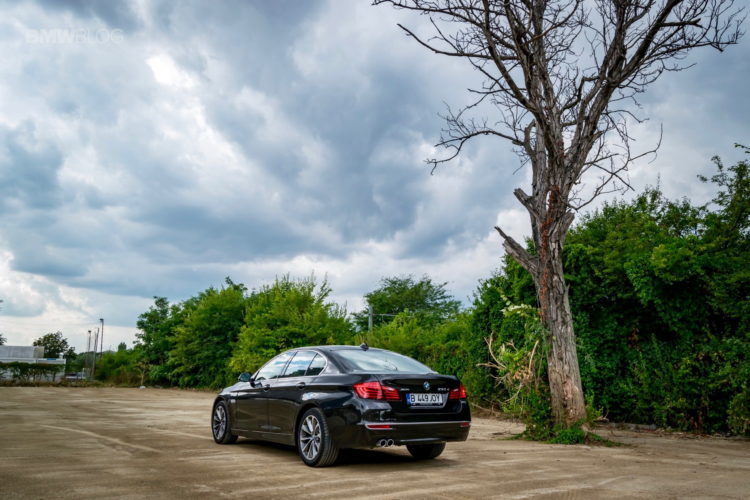
Comfort mode is the default choice of the car for your driving and probably the one most people will end up using 90 percent of the time, while Comfort+ makes things all but a bit better. The pedal response is a bit more constrained compared to the standard Comfort mode while the steering effort remains the same. The dampers soften up even more though and the gearshifts are smoother, something we couldn’t believe would be possible. As a matter of fact, driving the car in Comfort+ mode reminded us of the 7 Series more than we’d like to admit.
Accelerating hard would compress the rear dampers so much that the nose would actually rise, giving off the feeling of driving a boat instead of a car, all in the hopes that the rear seat occupants would be as comfy as possible. The same can be said about braking abruptly in the same driving mode, as the nose will dive rather hard to stop on a dime if needed.
However, if you’re buying a 5 Series instead of an Audi A6 or Mercedes-Benz E-Class, both newer cars that have various aces up their sleeves, you’ll probably do it not for the comfort the BMW offers but for the driving feel. And that’s when you need to enter Sport mode, which is where the blue and white badge definitely stands out.Activate it and the car simply transforms. The most noticeable change will be in body roll, as everything stiffens up in about 10 milliseconds, and the car feels as if it’s a cat arching its back at a newly arrived rival.
Everything is on point, all electronics on board are working to make you get wherever you need to with the utmost urgency. Apart from the stiffened up dampers, you’ll also feel the steering get heavier, as well as a drastically sharper pedal response (as sharp as it can get, considering this is a turbocharged diesel after all).

To be honest, turbo lag in Sport mode is a rather distant memory. Sure, you can feel it at times but only for what feels like a blink of an eye, most of time the rest of your body trying its best to cope with the surging amounts of torque. With the dampers in full attack mode and the engine on its toes, Sport+ mode will also deactivate the traction control nannies partially, to allow you to have some fun and burn some – rather limited amount of – rubber.
A lot of critics of the 5 Series have seemingly made it their life’s purpose to point out just how heavy it is. Well, yes, the F10 5 Series is a heavy car but that won’t get in the way of enjoying driving it. The truth of the matter is, few people will ever drive this thing hard, as we all know that they are mostly bought by family men that want more room for their loved ones, as well as well-paid executives that don’t actually have to pay for them.Therefore, it’s the room, the power and the attitude of this car that makes it so desirable, not the fact that it should weigh as little as possible. And even with the extra hundred kilos on board, you can still have some obscene amounts of fun with it, as long as you go for an engine that has enough power to deliver them to you, such as our own tester.
[quote text_size=”medium” align=”right”]
Considering the F10 5 Series was launched nearly 7 years ago, the way its design held up over the years is rather stunning.
[/quote]
What’s more, even though the BMW 530d xDrive model does tip the scale at nearly 1.9 tons, it wasn’t as thirsty as one would imagine. Outside the city limits, we recorded an average fuel consumption of 7 l/100 km (33.6 mpg) which is not bad at all considering the average speed recorded was 130 km/h (around 81 mph). Around town, we encountered bad traffic every single day, and the results showed an average speed of 25 km/h (16 mph) with a fuel consumption between 9 and 10 l/100 km (23.5 to 26.1 mpg). Even so, there’s little to complain about here, as this is a mid-size sedan with a rather big engine under its hood.
Navigating city streets is also quite easy to do, as the 5er is not a car that restricts your visibility in any way. There’s no low slung roofline, no narrow windows to obstruct your line of sight, therefore it’s easy to drive and park without having to resort to electronics. Furthermore, the design of the thing is probably one of the best in class, even to this day.
Considering the F10 5 Series was launched nearly 7 years ago, the way its design held up over the years is rather stunning. Even compared to its main rivals, such as the more recent Audi A6 and the Mercedes-Benz E-Class, the latter which was just launched, it manages to hold its own. Sure, we need to mention that a life cycle impulse – BMW speech for facelift – was launched some three years ago but it was so small on the design side of things, that most people still have trouble distinguishing between pre- and facelift models.
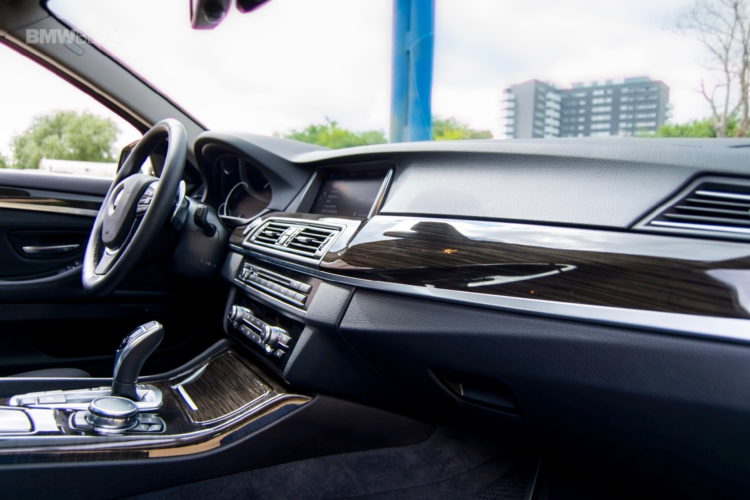
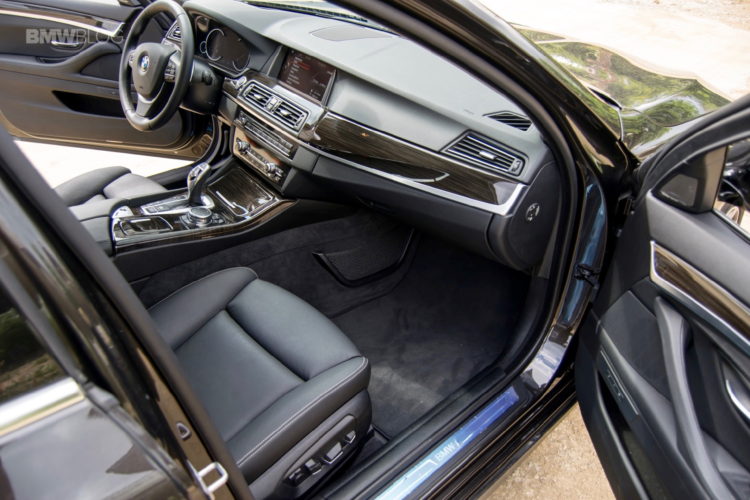
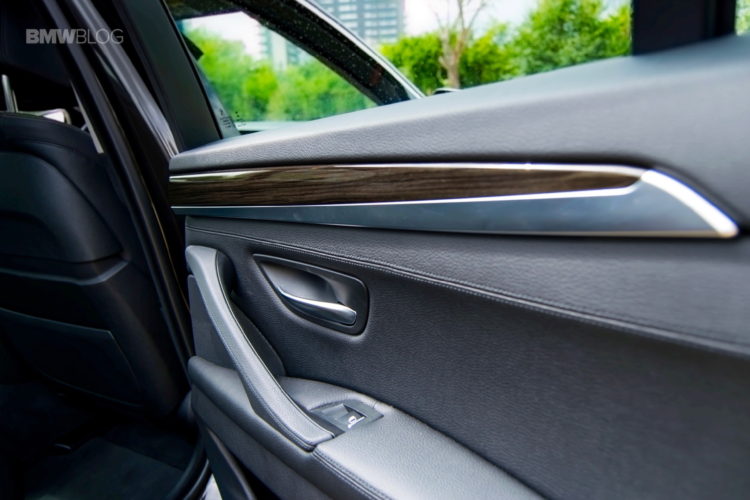
The LED strips at the back and the corona rings up front combined with LED headlamps make the 5er stand out. Our tester was also wearing Jatoba brown paint that made passersby drool even and photo editing a nightmare to get it to shine. From a distance and in anything but direct sunlight, it will look black but up close and with plenty of light on it, Jatoba brown is probably one of the best colors you can get for your 5 Series without resorting to the Individual catalogue.
But even without these tricks, the 5 Series still remains a return to form for BMW after the rather controversial E60 range, penned by Chris Bangle. Some loved its styling and the courage to go against the norm and offer something a bit more eccentric, if you will. Others didn’t and they made up the large majority, the one that in turn adores the shapes of the F10 that are filled with character lines on the hood and sides of the car and feature the same recipe BMWs have been using for ages: short overhangs, big air intakes on the front fascia and massive kidney grilles. To me, it works and it looks better than anything else in its segment out there right now.

Inside the cabin though, it’s a different story. Even though you won’t be devoid of any new technology you may need, the design is starting to show its age, especially if you use the competition as a reference point. The design might not have pizazz like the newer A6 and E-Class have but you will not find one piece of trim trim or one material that isn’t up to BMW’s premium standards. The fit and finish is impeccable and even though everything looks a bit dated, it feels good to the touch everywhere you extend your fingers. Everything is beautifully made, but also at the same time everything seems bland with only one exception — the digital dash.

The graphics are incredible and the design fits this day and age like a glove. Going through the different driving modes, you’ll be sorting through different shades of blue for the Eco Pro mode up to bright red for Sport and Sport+ modes. The Navigation Professional optional feature is also nice to have. Today, people rarely use the navigation systems on board their cars anymore since smartphone applications are much better and being updated in real time. But without it, the smaller screen that comes with the Business version will make a bit of a difference for the worse, I’m afraid.
As a matter of fact, even though the 5er has been around for quite a long time, it still comes with a lot of technology other brands are just introducing. You get internet connectivity inside and if you go for the Office package, the e-mails you receive can be read out to you. Furthermore, thanks to BMW’s app, you can also find your car in a parking lot using your smartphone.
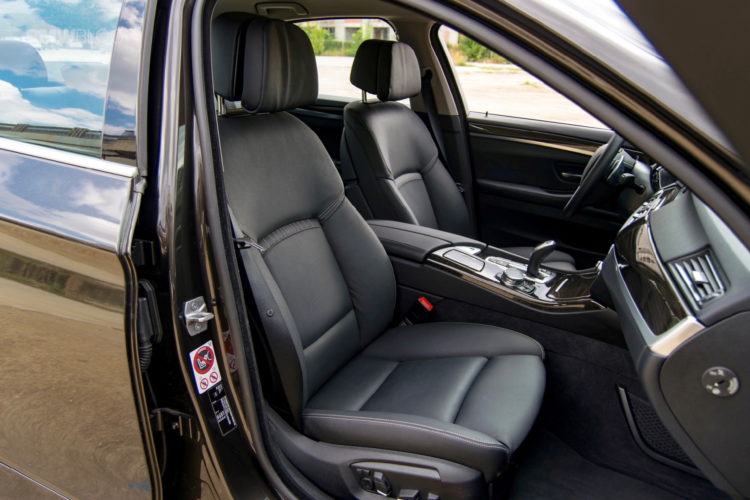
Passengers inside get plenty of room, and three adults can sit in the back, almost in comfort. Two 6-ft tall adults will do so in absolute comfort in the back, though, and will have plenty of headroom, something the competition can’t match. One gripe we have to mention is the fact that the storage spaces aren’t all that great. The glove box compartment and the cup holders (four in total) are great but other than that, you’ll be hard pressed to find usable bins. The door panel cubbies are not small, as they extend almost across the whole length of the doors but they have narrow openings that won’t allow you to actually use them for big items. But it has enough storage space for families to make do.
Everything is right as it should be then, especially if you consider the fact that the current 5 Series is on its way out. At the end of its production cycle, the 5er is still a good car overall, one that you should keep in mind if you’re looking for a new ride. And that makes us especially confident about the upcoming model as the only gripes we had with our tester should be solved.
The G30 5 Series will further improve the interior, especially in terms of quality and regarding the materials used. Don’t expect a big change in the design though, as it will most likely be just a small evolution of what’s available today. However, it will be a lot closer to the 7 Series and that can only be interpreted as good news.
On top of that, the weight factor is supposed to finally be fixed, as the new Cluster Architecture platform is aiming at shedding some 200 lbs (100 kg) off the hips of the G30 5er, which would be a much needed and welcome change of pace. What’s even more impressive is that at the end of its production run, the F10 5 Series can still hang close to its newer rivals.
The Mercedes-Benz E-Class is a bit more comfortable overall but not by much, while the interior design of the Audi A6 might be a bit better. Even so, the 5er remains true to its pedigree and is better to drive than both of them, as customers prefer it to be. With the new model promising to solve the small problems the current one makes rather evident on each trip, it’s hard to curb our enthusiasm towards what the future may hold, as the G30 promises to bring to the table everything you could wish for.



